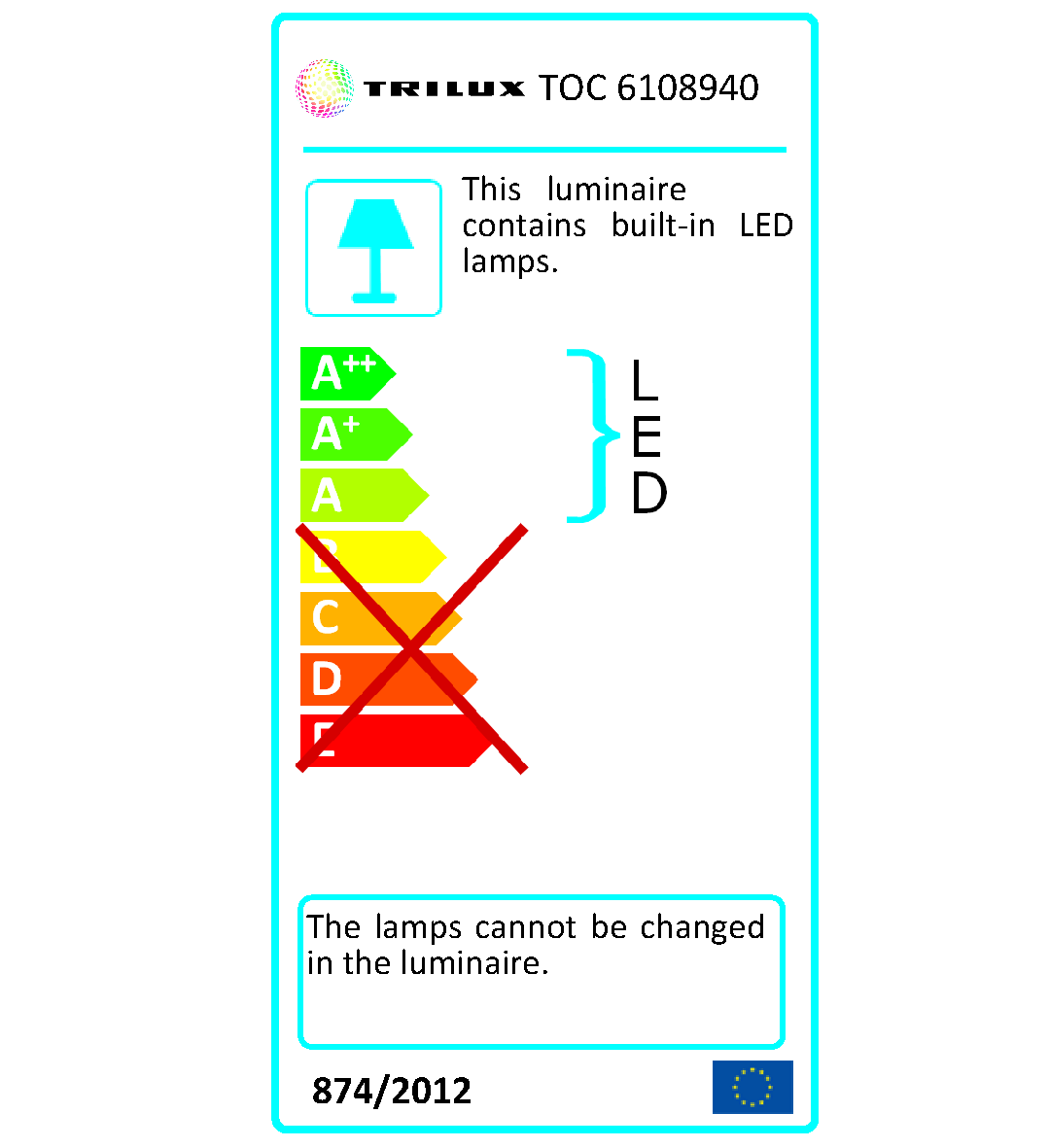The central component of any lighting installation are its light sources, since they deliver the "raw material" which is then to be further distributed and controlled.
Energy efficient light sources
For efficient light generation, it is important to observe the following:
A high luminous efficacy specifies how much light (lumen) is available in connection with the utilised connected load (watt).
For LED luminaires, this value is specified as "rated luminous efficacy" for the initial state of the luminaire.
For fluorescent lamps, the luminous efficacy is the result of system luminous efficacy Φlamp/PSys and light output ratio ηLB (see chapter and chapter ). The system luminous efficacy of the lamp itself strongly depends on the control gear used to operate the lamp (a possible indicator for this is the "mobile test", see chapter "Inductive control gear").
Additionally, the degradation behaviour of the light source (decrease in luminous flux of the fluorescent lamp/LED luminaire over the course of its service life) must be considered, since it determines the maintenance factor for luminaire planning (see chapter "Example for maintenance factor determination based on technical data of LED luminaires and room").
For fluorescent lamp luminaires, the luminous efficacy is the result of lamp luminous efficacy Φlamp/PSys and light output ratio ηLB (see also chapter ).
For LED as well as fluorescent lamps, application-specific requirements to light colour and colour rendering index must be observed.
In the recent past, state-of-the-art LED versions have become established as modern light sources. They reach their maximum efficiency and reliability built into luminaires (see also chapter ).
Energy labelling
When offering lamps in retail sales today, retailers are legally obliged to clarify to the technically untrained customer how well the lamp is utilising electrical power to generate light.
For this purpose, the European Union has passed directives on energy labelling for lamps:
EU Directive 2010/30/EU [162] on the indication by labelling and standard product information of the consumption of energy
Directive 874/2012/EU [182] with regard to energy labelling of electrical lamps and luminaires
These EU directives regulate labelling for electrical lamps and luminaires. Lamps to be labelled since the amendment in 2012 fundamentally include all lamps for household and professional use, such as:
incandescent lamps,
fluorescent lamps,
high-intensity discharge lamps,
LED lamps and LED modules.
The following are exempt from labelling:
lamps and LED modules with a luminous flux below 30 lumens (lm);
lamps and LED modules marketed for use with batteries;
lamps and LED modules marketed for applications where the primary purpose is not lighting;
lamps and LED modules marketed as part of a luminaire and not intended to be removed by the end user, except when they are offered or displayed to the end user in a separated fashion (e.g. as spare parts) for sale, rent or instalment purchase;
lamps and LED modules marketed as part of a product whose primary purpose is not lighting. However, if they are offered or displayed in a separated fashion (e.g. as spare parts) for sale, rent or instalment purchase, the directive applies to them.
Lamps and LED modules which do not fulfil the requirements that must be applied due to regulations on implementing the Directive 2009/125/EC of the European Parliament and of the Council from 2013 and 2014;
luminaires exclusively designed for operation with the lamps and LED modules mentioned in the first three points.
The following are exempt from labelling:
all lamps with a luminous flux in excess of 6.500 lumens
lamps with a power consumption below 4 watts
all low voltage halide lamps
reflector lamps
battery-operated lamps
lamps not primarily intended for lighting, e.g. UV, IR, black light and germicidal lamps as well as all lamps for special applications and
lamps predominantly used in commercial settings such as high-intensity discharge lamps and low-pressure sodium vapour lamps.
The labelling of lamps or their packaging, as is the case e.g. with refrigerators, mostly consists of an energy efficiency label containing the colour scale of energy efficiency classes A++ (very efficient) to E (inefficient) and possibly data on lamp luminous flux, lamp wattage and average service life. Measurement methods for determining the energy efficiency class are defined in EN 50285 "Energy efficiency of electric lamps for household use – Measurement methods". For LED lamps, the general classification is A to A++ .

Figure 3.53: Energy label according to the lamps which can be used to operate the luminaire in question.
Energy labelling for luminaires according to this pattern is not appropriate due to the aforementioned dependency of their efficiency on the specific application. For this reason, luminaires in retail are labelled with the efficiency classes of the light sources which can be used for their operation.